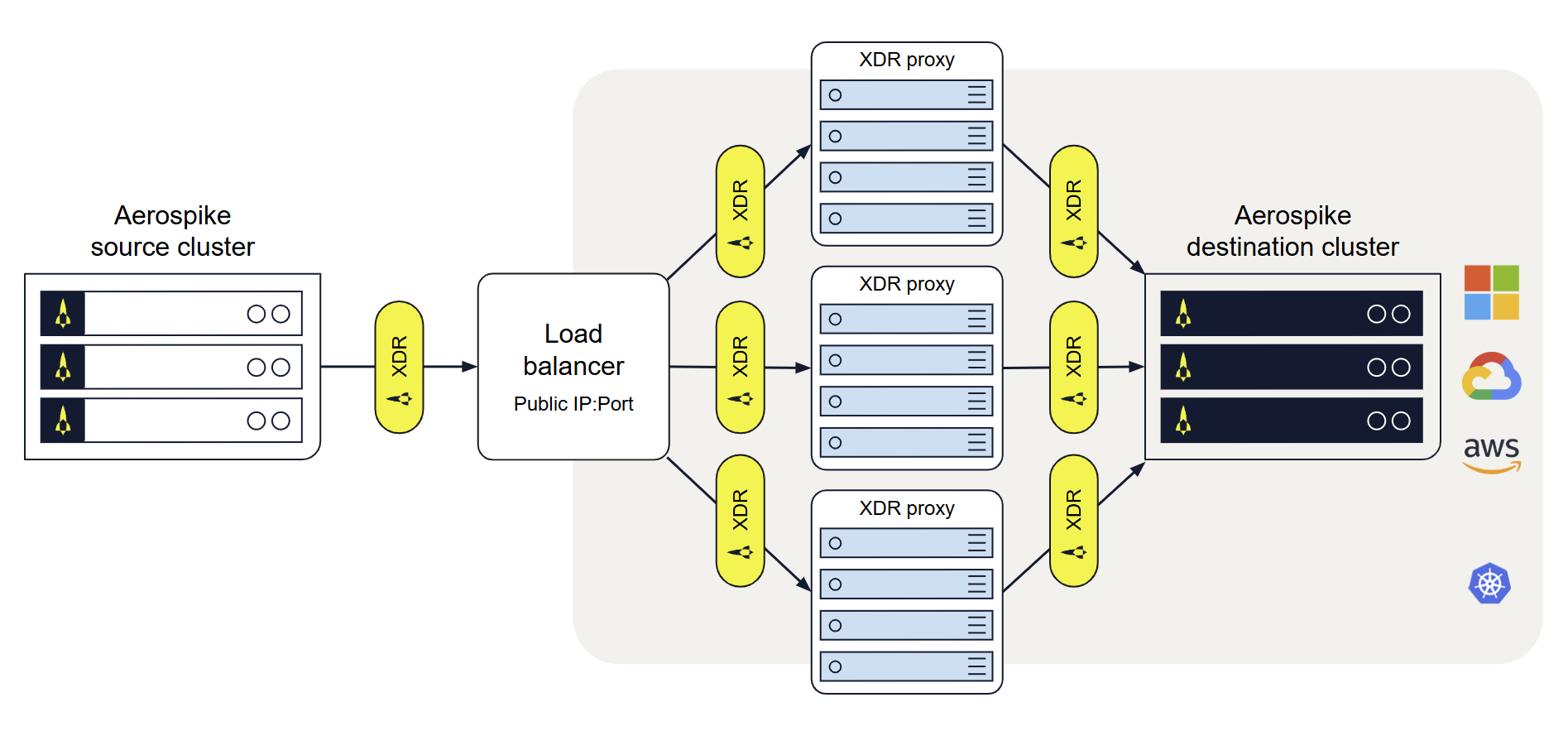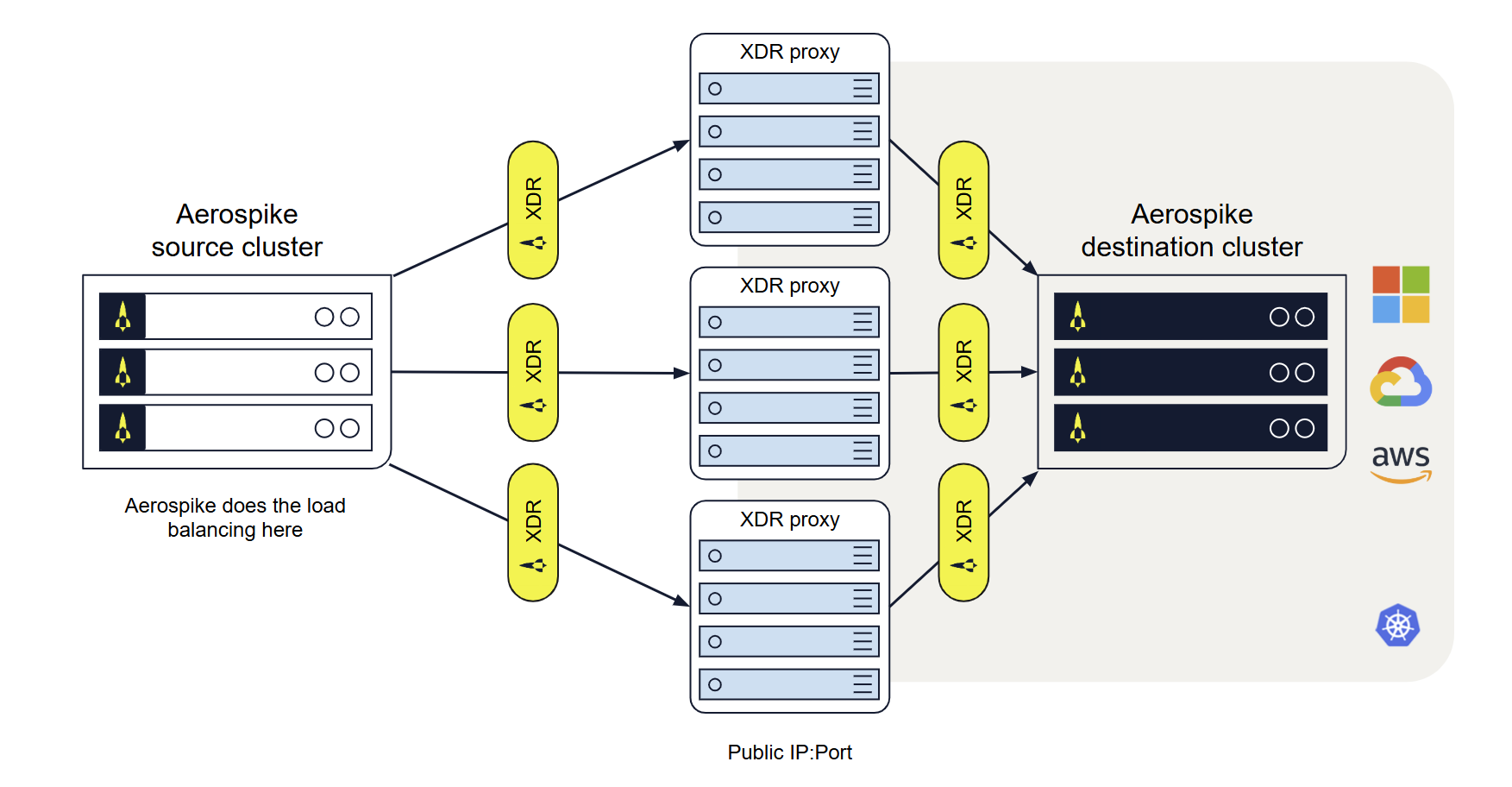Aerospike XDR Proxy
Aerospike’s XDR Proxy allows two Aerospike clusters deployed in different regions to send XDR traffic to each other using one endpoint in each region. XDR Proxy is a component of Cross-Datacenter Replication (XDR), a core feature of Aerospike Database Enterprise Edition. XDR asynchronously replicates cluster data over higher-latency links, typically WANs.
-
XDR Proxy requires you to provide IP addresses and ports of all Aerospike nodes of the destination cluster. This may raise security concerns depending on your topology. Accessing remote clusters safely can be especially difficult when working with Kubernetes applications.
-
XDR Proxy addresses cloud networking issues where the source Aerospike cluster cannot get direct access to the nodes of the remote cluster when it is a different zone or region. It handles addressing of the nodes within each cluster transparently.
-
XDR Proxy receives data from the Aerospike server over the XDR framework.
-
XDR Proxy writes to the destination using the Java Client. Each message contains either an updated or inserted record, or a record deletion notification. Each update or insert message contains the full database record including all or a subset of the record’s bins. Record deletion notifications contain the namespace and the record digest but not the record bins.

Figure 1: XDR Proxy behind the TCP load balancer

Figure 2: XDR Proxy without the load balancer